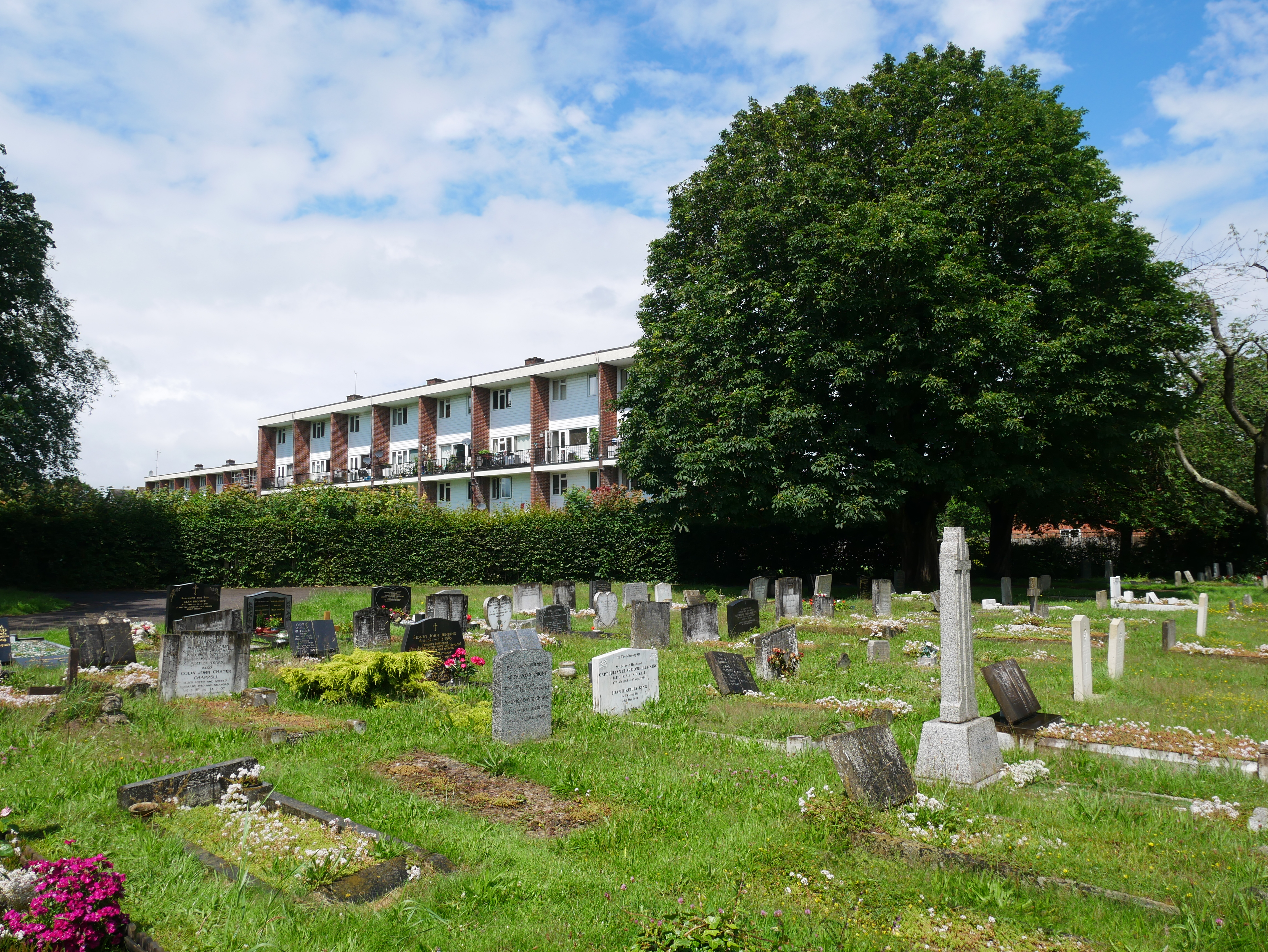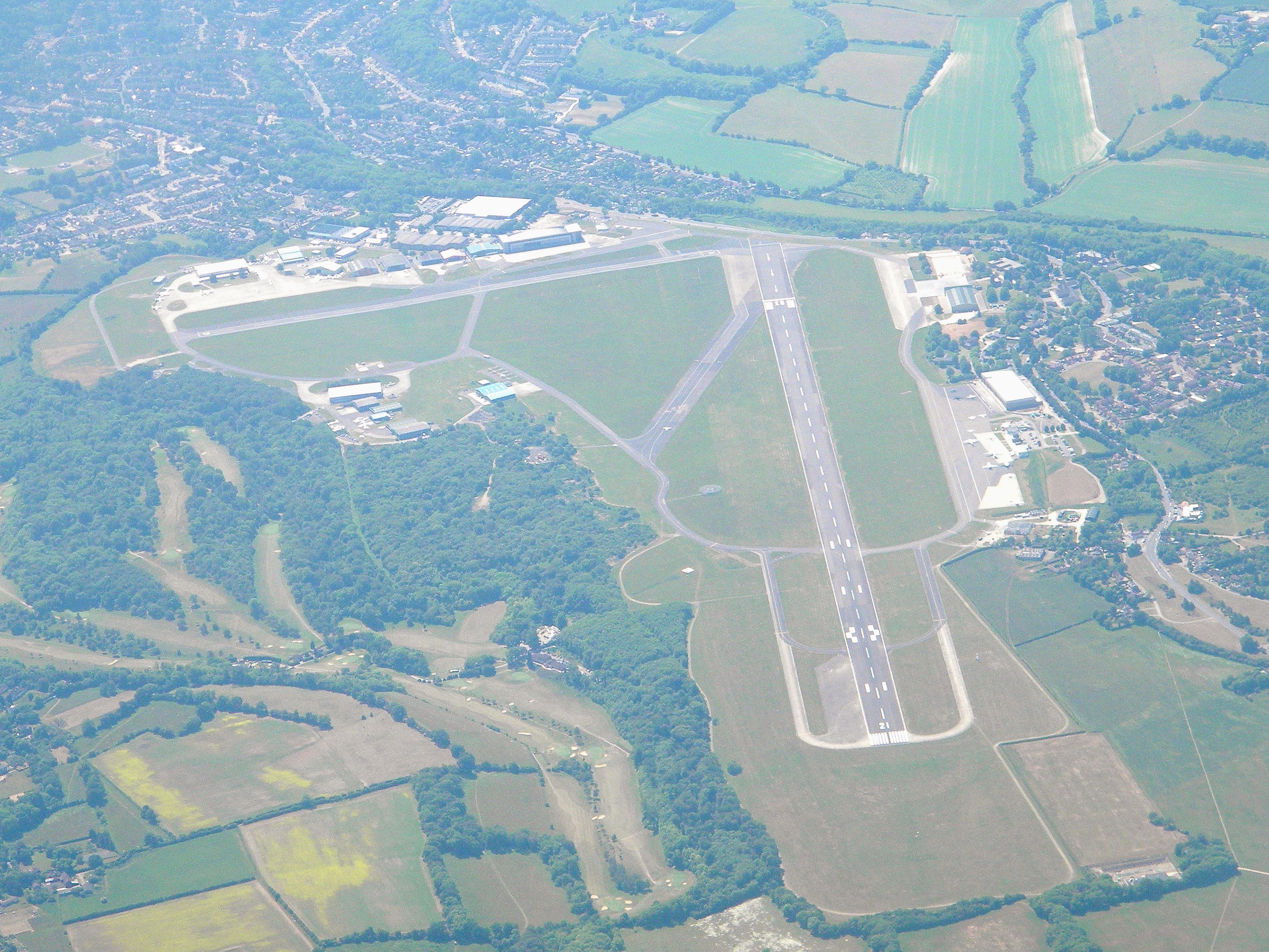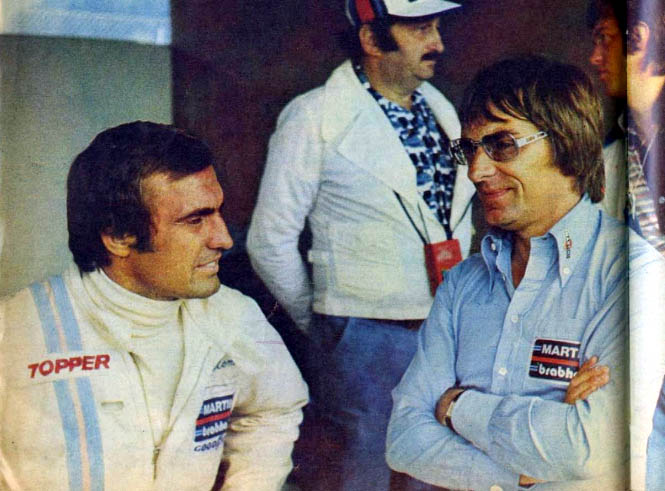|
Biggin Hill
Biggin Hill is a settlement on the south-eastern outskirts of Greater London, England, within the London Borough of Bromley. Within the boundaries of the historic county of Kent, prior to 1965 it was also in the administrative county of Kent. It is situated beyond London's urban sprawl, south-southeast of Charing Cross, with Keston to the north, New Addington to the north-west and Tatsfield, in the neighbouring county of Surrey, to the south. At the 2011 Census, Biggin Hill had a population of 9,951. Biggin Hill is one of the highest points of Greater London, rising to over above sea level. Biggin Hill Airport occupies land formerly used by RAF Biggin Hill, one of the principal fighter bases protecting London from German bombers during the Battle of Britain. History Historically, the settlement was known as Aperfield and formed part of the parish of Cudham. Biggin Hill was an ancient parish in the county of Kent, in the Diocese of Rochester, and under the Local Gov ... [...More Info...] [...Related Items...] OR: [Wikipedia] [Google] [Baidu] |
RAF Biggin Hill
London Biggin Hill Airport is an operational general aviation airport at Biggin Hill in the London Borough of Bromley, located south-southeast of Central London. The airport was formerly a Royal Air Force station RAF Biggin Hill, and a small enclave on the airport still retains that designation. Biggin Hill is best known for its role during the Battle of Britain in the Second World War, when it served as one of the principal fighter bases protecting London and South East England from attack by German Luftwaffe bombers. Over the course of the war, fighters based at Biggin Hill claimed 1,400 enemy aircraft, at the cost of the lives of 453 Biggin Hill based aircrew. The airport has a CAA Ordinary Licence (Number P804) that allows flights for the public transport of passengers or for flying instruction as authorised by the licensee (Regional Airports Limited). It specialises in general aviation, handling a spectrum of traffic from private aviation to large business jets. It cu ... [...More Info...] [...Related Items...] OR: [Wikipedia] [Google] [Baidu] |
London Biggin Hill Airport
London Biggin Hill Airport is an operational general aviation airport at Biggin Hill in the London Borough of Bromley, located south-southeast of Central London. The airport was formerly a Royal Air Force station RAF Biggin Hill, and a small enclave on the airport still retains that designation. Biggin Hill is best known for its role during the Battle of Britain in the Second World War, when it served as one of the principal fighter bases protecting London and South East England from attack by German Luftwaffe bombers. Over the course of the war, fighters based at Biggin Hill claimed 1,400 enemy aircraft, at the cost of the lives of 453 Biggin Hill based aircrew. The airport has a CAA Ordinary Licence (Number P804) that allows flights for the public transport of passengers or for flying instruction as authorised by the licensee (Regional Airports Limited). It specialises in general aviation, handling a spectrum of traffic from private aviation to large business jets. It ... [...More Info...] [...Related Items...] OR: [Wikipedia] [Google] [Baidu] |
Orpington (UK Parliament Constituency)
Orpington is a constituency created in 1945 and represented in the House of Commons of the UK Parliament since 2019 by Gareth Bacon, a Conservative. It is the largest constituency in Greater London by area, covering the east and south of the London Borough of Bromley. History Orpington was created in a major boundary review enacted at the 1945 general election, which followed an absence of reviews since 1918. The seats of Dartford and Chislehurst had both seen their electorate grow enormously into newly built houses since the 1918 review and were treated as one and reformed into four seats, creating the additional seats of Bexley and this one in 1945. ;Political history The seat has been won by a Conservative since creation except for the 1962, 1964 and 1966 Liberal Party wins of Eric Lubbock. The 2015 result made the seat the 43rd safest of the Conservative Party's 331 seats by percentage of majority. ;Role in the Liberal Party revival The seat is famous for its 1962 b ... [...More Info...] [...Related Items...] OR: [Wikipedia] [Google] [Baidu] |
Diocese Of Rochester
The Diocese of Rochester is a Church of England diocese in the English county of Kent and the Province of Canterbury. The cathedral church of the diocese is Rochester Cathedral in the former city of Rochester. The bishop's Latin episcopal signature is: " (firstname) Roffen", ''Roffensis'' being the genitive case of the Latin name of the see. An ancient diocese, it was established with the authority of King Æthelberht of Kent by Augustine of Canterbury in 604 at the same time as the see of London. Only the adjacent Diocese of Canterbury is older in England. Its establishment was the first part of an unrealised plan conceived by Pope Gregory the Great for Augustine of Canterbury to consecrate 12 bishops in different places and another 12 for the prospective see (later province) of York. The Rochester diocese includes 268 parish churches throughout: * the western part of the county of Kent *the London Borough of Bexley *the London Borough of Bromley; The diocese is subdiv ... [...More Info...] [...Related Items...] OR: [Wikipedia] [Google] [Baidu] |
Hawker Hurricane
The Hawker Hurricane is a British single-seat fighter aircraft of the 1930s–40s which was designed and predominantly built by Hawker Aircraft Ltd. for service with the Royal Air Force (RAF). It was overshadowed in the public consciousness by the Supermarine Spitfire during the Battle of Britain in 1940, but the Hurricane inflicted 60 percent of the losses sustained by the Luftwaffe in the campaign, and fought in all the major theatres of the Second World War. The Hurricane originated from discussions between RAF officials and aircraft designer Sir Sydney Camm about a proposed monoplane derivative of the Hawker Fury biplane in the early 1930s. Despite an institutional preference for biplanes and lack of interest by the Air Ministry, Hawker refined their monoplane proposal, incorporating several innovations which became critical to wartime fighter aircraft, including retractable landing gear and the more powerful Rolls-Royce Merlin engine. The Air Ministry ordered Hawker ... [...More Info...] [...Related Items...] OR: [Wikipedia] [Google] [Baidu] |
Gate Guardians
A gate guardian or gate guard is a withdrawn piece of equipment, often an aircraft, armoured vehicle, artillery piece, or locomotive, mounted on a plinth and used as a static display near to and forming a symbolic display of "guarding" the main entrance to a site, especially a military base. Commonly, gate guardians outside airbases are decommissioned examples of aircraft that were once based there, or still are. Examples Examples of gate guardians include the following: Australia In Australia, gate guards are also often found outside Returned and Services League of Australia (RSL) clubs. Finland *A MiG-21 formerly of the Finnish Air Force is on display at the entrance of Kuopio Airport. *Two T-34s at the Armoured Brigade. Saudi Arabia *Lockheed L-1011 TriStar which operated under Saudia in the 1970s is placed on a tarmac next to the gate at Royal Saudi Air Force Museum in Riyadh. South Africa * Atlas Impala at Air Force Base Ysterplaat. *Twin Eland Mk7 Armoured ... [...More Info...] [...Related Items...] OR: [Wikipedia] [Google] [Baidu] |
Grade II
In the United Kingdom, a listed building or listed structure is one that has been placed on one of the four statutory lists maintained by Historic England in England, Historic Environment Scotland in Scotland, in Wales, and the Northern Ireland Environment Agency in Northern Ireland. The term has also been used in the Republic of Ireland, where buildings are protected under the Planning and Development Act 2000. The statutory term in Ireland is " protected structure". A listed building may not be demolished, extended, or altered without special permission from the local planning authority, which typically consults the relevant central government agency, particularly for significant alterations to the more notable listed buildings. In England and Wales, a national amenity society must be notified of any work to a listed building which involves any element of demolition. Exemption from secular listed building control is provided for some buildings in current use for worsh ... [...More Info...] [...Related Items...] OR: [Wikipedia] [Google] [Baidu] |
Bernie Ecclestone
Bernard Charles Ecclestone (born 28 October 1930) is an English business magnate. He is the former chief executive of the Formula One Group, which manages Formula One motor racing and controls the commercial rights to the sport, and part-owns Delta Topco, the previous ultimate parent company of the Formula One Group. As such, he was commonly described in journalism as the 'F1 Supremo'. Ecclestone entered two Grand Prix races as a driver, during the 1958 season, but failed to qualify for either of them. Later he became manager of drivers Stuart Lewis-Evans and Jochen Rindt. In 1972, he bought the Brabham team, which he ran for 15 years. As a team owner he became a member of the Formula One Constructors Association. His control of the sport, which grew from his pioneering sale of the television rights in the late 1970s, was chiefly financial, but under the terms of the Concorde Agreement he and his companies also managed the administration, setup and logistics of each Formula ... [...More Info...] [...Related Items...] OR: [Wikipedia] [Google] [Baidu] |
Biggin Hill Cemetery
Biggin can refer to: * Biggin (Dovedale and Parwich Ward), Derbyshire, in the Peak District * Biggin Hill a town in London * London Biggin Hill Airport an airport near Biggin Hill, London * Biggin by Hulland, Derbyshire, near Hulland * Biggin, North Yorkshire * Biggin, Warwickshire * Biggin, Essex * a nightcap * coffee pot with a separate container to hold the ground coffee (named after its inventor) {{geodis ... [...More Info...] [...Related Items...] OR: [Wikipedia] [Google] [Baidu] |
World War II
World War II or the Second World War, often abbreviated as WWII or WW2, was a world war that lasted from 1939 to 1945. It involved the vast majority of the world's countries—including all of the great powers—forming two opposing military alliances: the Allies and the Axis powers. World War II was a total war that directly involved more than 100 million personnel from more than 30 countries. The major participants in the war threw their entire economic, industrial, and scientific capabilities behind the war effort, blurring the distinction between civilian and military resources. Aircraft played a major role in the conflict, enabling the strategic bombing of population centres and deploying the only two nuclear weapons ever used in war. World War II was by far the deadliest conflict in human history; it resulted in 70 to 85 million fatalities, mostly among civilians. Tens of millions died due to genocides (including the Holocaust), starvation, massa ... [...More Info...] [...Related Items...] OR: [Wikipedia] [Google] [Baidu] |
V-1 Flying Bomb
The V-1 flying bomb (german: Vergeltungswaffe 1 "Vengeance Weapon 1") was an early cruise missile. Its official Ministry of Aviation (Nazi Germany), Reich Aviation Ministry () designation was Fi 103. It was also known to the Allies as the buzz bomb or doodlebug and in Germany as (cherry stone) or (maybug). The V-1 was the first of the (V-weapons) deployed for the terror bombing of London. It was developed at Peenemünde Army Research Center in 1939 by the at the beginning of the Second World War, and during initial development was known by the codename "Cherry Stone". Because of its limited range, the thousands of V-1 missiles launched into England were fired from V-1 flying bomb facilities, launch facilities along the French (Pas-de-Calais) and Dutch coasts. The Wehrmacht first launched the V-1s against London on 13 June 1944, one week after (and prompted by) the successful Operation Overlord, Allied landings in France. At peak, more than one hundred V-1s a day were fire ... [...More Info...] [...Related Items...] OR: [Wikipedia] [Google] [Baidu] |
Operation Crossbow
''Crossbow'' was the code name in World War II for Anglo-American operations against the German long range reprisal weapons (V-weapons) programme. The main V-weapons were the V-1 flying bomb and V-2 rocket – these were launched against Britain from 1944 to 1945 and used against continental European targets as well. Initial intelligence investigations in 1943 into the progress of German long range weapons were carried out under the code name Bodyline. On 15 November, a larger operation was set up under the name ''Crossbow''. Post-war, Crossbow operations became known as "Operation Crossbow" particularly following the 1965 film of the same name. Crossbow included strategic operations against research and development of the weapons, their manufacture, transportation and attacks on their launch site, and fighter intercepts against missiles in flight. At one point, the British government, in near panic, demanded that upwards of 40% of bomber sorties be targeted against the la ... [...More Info...] [...Related Items...] OR: [Wikipedia] [Google] [Baidu] |








